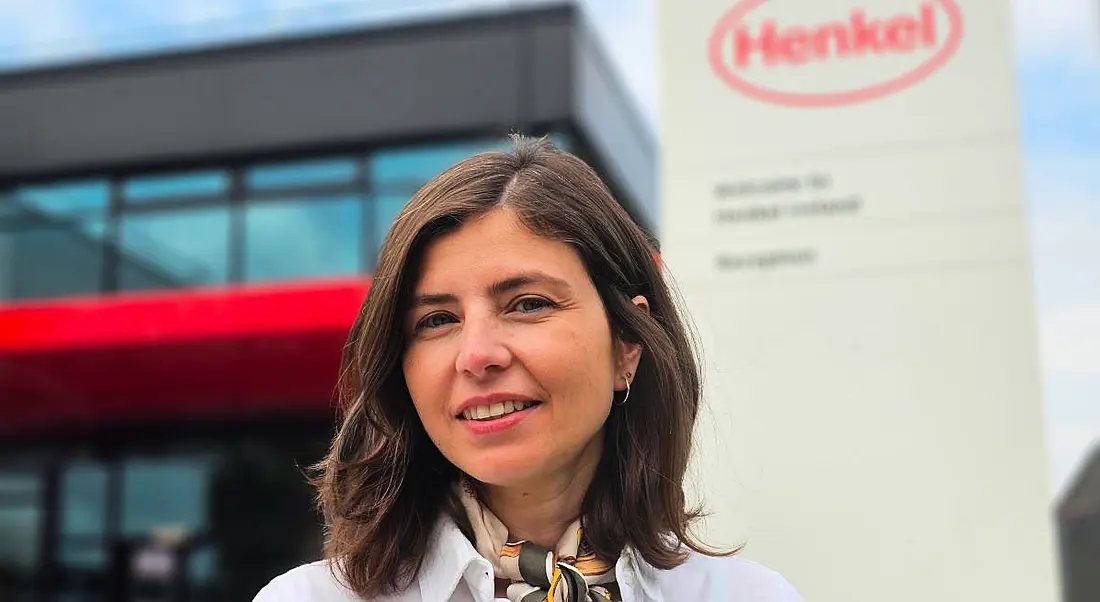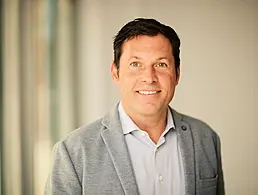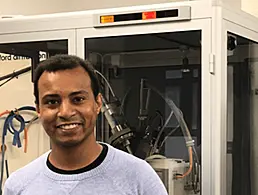Henkel’s Dr Berran Sanay tells us how she first became interested in polymer chemistry and dispels some common misconceptions about a career in research.
“I have always been fascinated with the way nature works,” says Dr Berran Sanay. “This led to an interest in natural sciences, driving me towards an academic career in chemistry.”
For Sanay, a mix of experience in academia and industry inspired her career journey. In particular, she credits her experience of both basic and applied research during her PhD in polymer chemistry, which she completed at the University of Potsdam in Germany in 2021.
“This experience provided me with direct exposure to the complete innovation process, which ranged from early-stage research in the lab to delivering functional solutions, customised products or technologies for industrial partners,” she says. “These collaborative initiatives that combined academia with industry, allowed me to gain valuable experience in application-focused research.”
In 2022, Sanay began her current role as a research chemist in Henkel’s Strategic Research Group (SRG), which she says enables her to “identify and transform innovative approaches into technological developments for industrial applications”.
Here she tells us about her polymer chemistry research and her day-to-day duties at Henkel.
‘Researching and continuous learning have always been my driving force’
Can you tell us about the research you’re currently working on?
I am currently working on an exciting project to generate smart polymer materials which can behave as an industrial adhesive and can also respond to external triggers. This type of material will offer solutions for industrial maintenance, repair and operations.
In this project, we leverage a diverse range of expertise and knowledge encompassing material science, physics, chemistry and IoT technology. This enables me to explore new concepts and continuously enhance my skills and capabilities.
While we try to achieve our goals in the project, we always align with Henkel’s sustainability strategy by utilising eco-friendly alternatives to traditional materials and adhering to sustainable design principles.
I am also involved in another project focusing on UV-curing technologies. UV-curing is where UV light initiates the polymerisation which hardens the adhesive. The curing process of the adhesive can be activated ‘on demand’ using a suitable light source and is able to continue curing in the absence of light, which has utility for bonding substances together that do not have optical transparency.
What first stirred your interest in this area?
Researching and continuous learning have always been my driving force, even before I had a specific idea of what area I wanted to go into. I was always keen on having a career where I could implement my scientific interest alongside my creativity. During my initial years at university, I recognised my special interest in polymer chemistry – this focuses on producing model polymeric materials consisting of repeating units of molecules with tailored properties for a wide range of applications such as aerospace, automative, packaging, construction or medical. This kept me focused and motivated to be creative.
The more I learned, the more fascinated I became with their unique properties and wide range of application areas, and I decided to build in-depth insight into polymeric materials. Rather than a specific moment, it was more gradual a process that attracted and increasingly directed my interest in this area, which eventually led to a research career path. Over time, my career enabled me to combine my knowledge with my passion for innovation.
‘The dynamic nature of my role keeps me motivated’
If there is such a thing, can you describe a typical day for you?
As a research chemist in SRG, my days are highly active and diverse. My working day typically commences early with checking my emails and outlining the tasks that I would like to complete by the end of the day. Daily activities and responsibilities can vary from conducting experiments in the lab, preparing and maintaining accurate records of resulting data, giving both technical and high-level presentations, and scouting recent publications and patents for relevant technology developments.
Additionally, I engage in training workshops and scientific symposiums to expand my knowledge and skills in relevant areas. My role also involves strong collaboration with internal technical teams and external research partners to drive ideas forward together.
Overall, my work is driven by a commitment to innovation, creativity and continuous learning. The dynamic nature of my role keeps me motivated and excited about research, as I navigate through different tasks each day.
What skills and tools do you use on a daily basis?
I would say creativity and critical thinking are the key skills I use on a daily basis in my role as we focus on future-oriented research and innovative solutions on complex topics in SRG. When I encounter technical hurdles in any project, critical thinking plays an important role to address the challenge, apply knowledge and find an alternative solution to overcome it. Creativity is also highly valued in the workplace, which helps me deliver new ideas and innovative solutions in the group.
I also feel that open communication is important in the workplace. I have been living and working in many different places, from Turkey to Germany to Ireland, and worked with many different people from different backgrounds. Throughout all those years I have recognised that open communication should always be a priority for collaborating with others. As a result, I can build strong relationships planted in openness and honesty.
Besides these skills, depending on the requirements of the experiment or research I carry out in the lab, tools I work with on a daily basis can range from surface analysis to thermo-mechanical analysis. These analytical tools are used in the lab to identify the material and get some information on thermal and mechanical behaviour of the material.
Are there any misconceptions around a career in research?
As can be the case with any professional career paths, there are some misconceptions around a career in research. One of them is that research is only about new discoveries and innovations. It is definitely a key component of R&D, but the research role also encompasses improving existing technologies, testing and increasing product performance or overcoming technical hurdles.
Following that, research can be perceived as pure exploratory work and not connected to the practical applications. However, research often aims to address real-world challenges and turn scientific knowledge into new technologies and innovations that benefit society. Therefore, alongside scientific curiosity and creativity, market needs are also important factors that determine the research conducted in the lab.
Another misconception is that researchers work alone in isolation or are introverted. Research requires strong collaboration with team members, industry or academic partners to generate new ideas or overcome some technical hurdles. Therefore, it requires strong engagement with other groups and good communication skills.
What do you think are the best ways to preserve a healthy work-life balance in a demanding research career?
Maintaining a healthy work-life balance can be challenging, but there are several key strategies.
One crucial aspect is to establish realistic working hours to maximise your efficiency and effectiveness at work because working for long hours does not always mean a high level of productivity. By managing your time effectively, such as prioritising tasks, breaking down big projects to manageable tasks and minimising distractions, more tasks can be achieved in less time which reduces the need for excessive time.
Another key to create a balance between work and life lies in active communication and collaboration with team members to achieve complex tasks in a timely manner. Personal activities such as spending time with family and friends, organising fun activities outside of work and taking time for yourself can help to boost productivity when you’re working. If we manage to set a symbiotic balance between career and life, we can bring the best version of ourselves to both.
Do you have any advice for others just starting out on their research journey?
I think it is crucial to consider what research topic interests them most. It is a journey of continuous learning with many challenges, which will shape their professional career path. Their special interest about the research topic helps them embrace challenges they might face on the way and helps to guide them through their journey. Literature review, being aware of recent technology developments, gaining some experiences in different working environments are effective ways to explore and enhance their passion in research.
Find out how emerging tech trends are transforming tomorrow with our new podcast, Future Human: The Series. Listen now on Spotify, on Apple or wherever you get your podcasts.




